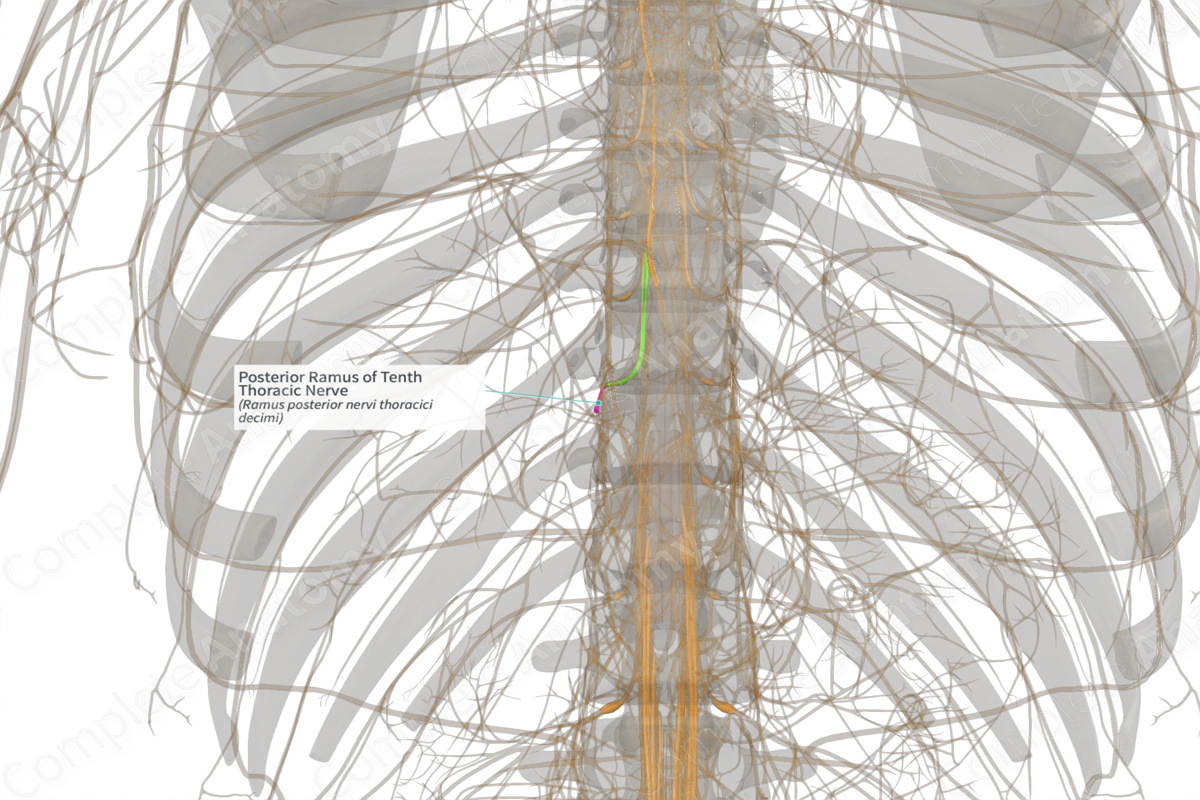
Posterior Ramus of Tenth Thoracic Nerve (Right)
Ramus posterior nervi thoracici decimi
Read moreQuick Facts
Origin: Thoracic nerve.
Course: Posteriorly to the epaxial muscles.
Branches: Medial and lateral branches.
Supply: Motor innervation to the epaxial muscles. Sensory innervation to the zygapophyseal joints and skin overlying the dorsal thoracic region.
Related parts of the anatomy
Origin
The posterior ramus is one of two branches of the thoracic nerve, the other being the anterior ramus.
Course
The posterior ramus runs posteriorly and inferiorly from its origin just lateral to the intervertebral foramen between its corresponding numerical vertebra and the one below. The ramus passes inferior to the transverse process of its corresponding numerical vertebra, lateral to the zygapophyseal joint, and medial to the intertransverse ligament. Here, the posterior ramus divides into medial and lateral branches.
Branches
The specific targets and branching patterns of the posterior rami of thoracic nerves exhibit variability depending on vertebral level and individual. In general, the posterior rami of the thoracic nerves split into two major branches, one lateral and one medial. Both branches run posteriorly and inferiorly towards their targets.
Supplied Structures & Function
The posterior rami of the thoracic nerves supply the epaxial musculature and skin dorsal to the thoracic vertebrae.
The lateral branches of the posterior rami of the thoracic nerves supply motor innervation to the iliocostalis and longissimus muscles, as well as sensory information from its targeted epaxial muscles. The lower lateral branches of the posterior rami (T7-T12) continue dorsally and inferiorly to pierce the superficial back muscles to reach the skin, in order to receive sensory information from the skin of the back (see our dermatome map for cutaneous innervation).
The medial branches of the dorsal rami of the thoracic nerves supply motor innervation to the intrinsic muscles of the back, including multifidus, semispinalis thoracis, spinalis thoracis, interspinales thoracis, and rotatores muscles. All medial branches provide an articular branch to the zygapophyseal joint. The upper medial branches of the posterior rami (T1-T6) continue dorsally and inferiorly to pierce the superficial back muscles to reach the skin, in order to receive sensory information from the skin of the back (see our dermatome map for cutaneous innervation).
Learn more about this topic from other Elsevier products


